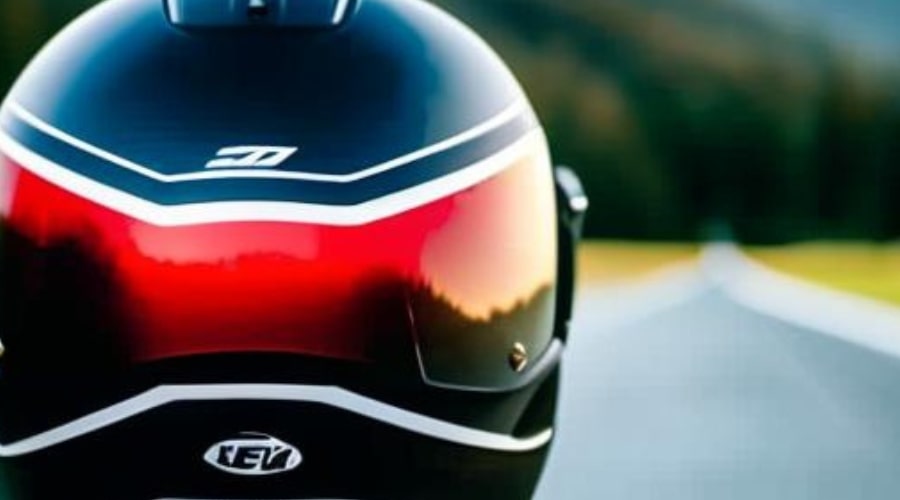Motorcycle helmets are an essential piece of safety equipment for riders. They protect the rider’s head in case of an accident and can mean the difference between life and death. But like all things, helmets have a lifespan, and it’s important to know when to replace them. In this article, we’ll answer the question: do motorcycle helmets expire?
The Lifespan of a Motorcycle Helmet
The lifespan of a motorcycle helmet varies depending on several factors, including the quality of the helmet, how often it’s used, and how well it’s maintained. On average, a motorcycle helmet should last around five years from the date of manufacture.
Why Do Motorcycle Helmets Expire?
The materials used to make motorcycle helmets degrade over time, making them less effective at protecting the rider’s head in case of an accident. Exposure to sunlight, heat, and chemicals can accelerate this degradation process.
Signs Your Motorcycle Helmet has Expired
There are several signs that your motorcycle helmet has expired and needs to be replaced. The most obvious sign is visible damage, such as cracks or dents in the shell. Other signs include a loose or worn-out chin strap, a loose-fitting helmet, or an uncomfortable fit.

How to Check if Your Motorcycle Helmet is Expired
To check if your motorcycle helmet is expired, look for the manufacturing date on the inside of the helmet. Most helmets have a sticker or tag that displays the date of manufacture. If the helmet is older than five years, it’s time to replace it.
Can You Use an Expired Motorcycle Helmet?
No, you should never use an expired motorcycle helmet. An expired helmet is no longer safe and can’t provide the protection you need in case of an accident.
How to Properly Store Your Motorcycle Helmet
Proper storage is essential to extend the lifespan of your motorcycle helmet. Store your helmet in a cool, dry place away from direct sunlight and chemicals. Avoid hanging it on a hook or storing it in a bag, as this can damage the interior padding.
How to Extend the Lifespan of Your Motorcycle Helmet
To extend the lifespan of your motorcycle helmet, you should follow these tips:
- Clean your helmet regularly using mild soap and water
- Avoid using harsh chemicals or solvents on your helmet
- Don’t expose your helmet to extreme temperatures
- Don’t drop or throw your helmet
- Don’t modify or paint your helmet
When to Replace Your Motorcycle Helmet
You should replace your motorcycle helmet if:
- It has been involved in an accident
- It has visible damage such as cracks or dents
- The chin strap is loose or worn-out
- The helmet no longer fits properly
- The helmet is older than five years
Factors to Consider When Replacing Your Motorcycle Helmet
When replacing your motorcycle helmet, there are several factors to consider. First, consider your budget. Helmets come in a wide range of prices, so it’s important to choose one that fits your budget.
Next, consider the type of riding you do. If you mostly ride on the highway, you may want a full-face helmet for maximum protection. If you do a lot of off-road riding, a dirt bike helmet may be more appropriate.
Finally, consider the fit and comfort of the helmet. A helmet that doesn’t fit properly or isn’t comfortable to wear won’t provide the protection you need.
Types of Motorcycle Helmets
There are several types of motorcycle helmets available, each with its own unique features and benefits.
Full-face helmets:
These helmets provide the most protection and cover the entire head and face. They’re great for highway riding and provide excellent protection in case of an accident.
Half helmets:
These helmets cover only the top of the head and leave the face and chin exposed. They’re lightweight and comfortable to wear but provide less protection than full-face helmets.
Three-quarter helmets:
These helmets cover the top and sides of the head, leaving the face and chin exposed. They provide more protection than half helmets but less than full-face helmets.
Dirt bike helmets:
These helmets are designed for off-road riding and have an open face to allow for better ventilation. They’re lightweight and offer good protection in case of a fall.
Modular helmets:
These helmets combine the features of full-face and three-quarter helmets. They have a chin bar that can be lifted up, allowing for more ventilation and easier communication.
Related: Does AGV Have ISI Mark?
FAQs:
How do I know when my motorcycle helmet was manufactured?
You can find the manufacturing date on a sticker or tag inside the helmet.
Can I still use my helmet if it’s never been in an accident but is more than five years old?
No, you should replace your helmet if it’s older than five years, regardless of whether it’s been in an accident or not.
Can I paint my motorcycle helmet?
No, you shouldn’t modify or paint your helmet as this can damage the helmet’s structural integrity.
Can I store my helmet in a bag?
No, you shouldn’t store your helmet in a bag as this can damage the interior padding.
How often should I replace my motorcycle helmet?
You should replace your helmet every five years, or sooner if it has visible damage or no longer fits properly.
Conclusion
Motorcycle helmets do expire, and it’s important to replace them when they do. A helmet that has expired is no longer safe and won’t provide the protection you need in case of an accident. By following the tips in this article, you can extend the lifespan of your helmet and ensure that you’re always protected when you ride.
Helmetslab is a website that focuses on providing in-depth reviews and information about different types of helmets, including motorcycle helmets and others helmets. I am writing a post with proper research on the info that helps helmet users.

